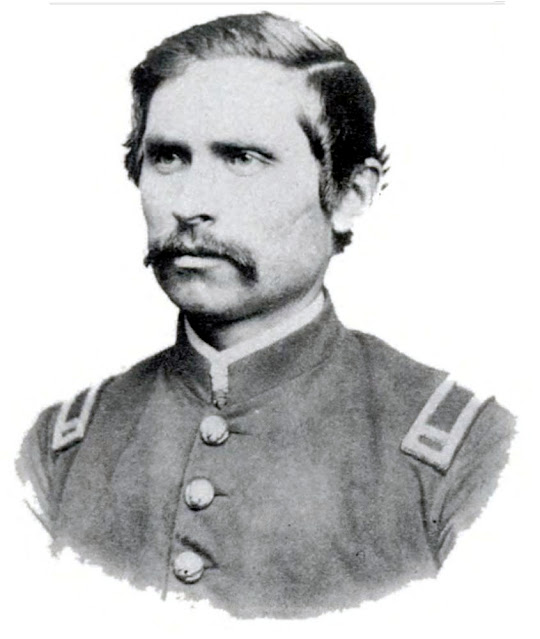Irish Patriot Timothy Deasy Died in Lawrence, MA on December 10, 1880
Timothy Deasy (1839-1880), Civil War soldier, Irish rebel and elected official, died on December 10, 1880 in Lawrence, MA.
Deasy emigrated with his family from Clonakilty, County Cork to Massachusetts in 1847 to escape the Irish Famine. The family settled in Lawrence 35 miles north of Boston, the nation's first planned industrial city where immigrants and Yankees worked long hours in mills and factories.
The Deasy family had long been involved in Irish political insurrections, starting with the United Irishmen Uprising of 1798. In Lawrence, Timothy and his younger brother Cornelius joined the Irish Republican Brotherhood, formed in 1858 as a physical force movement to oust Britain from Ireland.
When the Civil War started, they enlisted in the 9th Massachusetts Volunteer Infantry in 1861. Both brothers were wounded in May 1864, but continued to fight with their unit.
After the war, Deacy and 300 veterans went to Ireland in 1865 to train Irish soldiers for a planned insurrection.
They returned to the States in 1866 and led an unsuccessful Fenian invasion of Canada, hoping to persuade the British Empire to free Ireland.
In January 1867 Deasy returned to England and raided Chester Castle, securing weapons and explosives for the Fenian Uprising in Ireland, which also failed. Deasy and Civil War veteran Colonel Thomas Kelly were arrested and imprisoned in Manchester, England. In a daring plot to free them, a Manchester police officer was killed. While Deasy and Kelly escaped, three of the rescuers were captured, tried for murder and hanged in public. They became known as the Manchester Martyrs.
Deasy returned to Lawrence and turned his energy toward politics. In 1872 he won a seat on the Lawrence City Council and won re-election in 1874. In 1876 he was elected to the Massachusetts House of Representatives. He retired after one term due to failing health and ran a pub in Lawrence with his brother. In 1880 he helped raise over $1,000 during Charles Stewart Parnell's visit to Lawrence on behalf of the Irish Land League.
Deasy died on December 10, 1880 and received a massive funeral ceremony, attended by the Ninth Massachusetts Regiment band and an Irish pipe band. Hundreds marched in the funeral cortege and thousands lined the street to bid their hero goodbye.
In 1990 the Irish National Graves Association designated Deasy's grave a national grave.
In November 1992, the Ancient Order of Hibernians, Division 8, placed a memorial tombstone on Deasy's grave at St. Mary's Immaculate Conception Cemetery in Lawrence/Andover.
AOH Director David R. Burke said at the time, "Deasy became a leading citizen of Lawrence, serving on the City Council and later in the State Legislature. But his historical contribution to Irish freedom and human rights is significant and deserves our appreciation.
US Ambassador to the Vatican Raymond L. Flynn, whose ancestors came from Clonakilty, praised the AOH for its keeping Deasy's memory alive, saying, "Our greatest task as Irish-Americans is to learn about our history."
Author Robert J. Bateman, who was Deasy's great grand nephew, has written extensively on Deasy and his life. Deasy is also part of the Fenian Graves database.
(Editor's Note: Deasy's name has also been spelled Deasy and Dacey in various media accounts).
- Text Courtesy of Boston Irish Heritage Trail.




Comments
Post a Comment